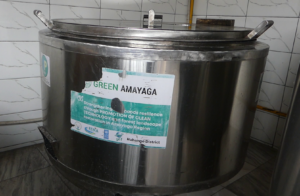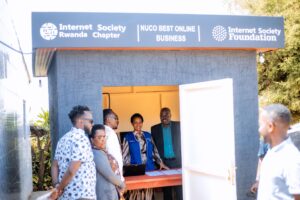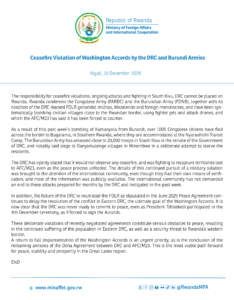South Africa is one of the first countries on the continent to engage in the nuclear fuel cycle. The country is also one of the founders of the International Atomic Energy Agency, because it was one of the first countries to mine uranium. Since then, it has had an active nuclear research program. So, what is the current situation in nuclear research in South Africa? In an interview, Professor James Larkin of the University of Witwatersrand and founder of “The Rhisotope Project” answers the question.
“Nuclear technology and science are used in a multitude of areas here in South Africa. From non-destructive testing of welds in high tech industries, to medical diagnostics and treatment, to power generation, insect control, to quite possibly rhinoceros horn devaluation and poaching reduction. The field is such a broad spectrum, that there is always something new to learn, which open new possibilities for current techniques to be used in wholly new ways. Medical science has made much use of various nuclear technologies for the diagnosis and treatment of numerous medical conditions, and there is more that can be done in this field. The need for the development, installation, operation, and licensing of stable power supply systems based either on fission or fusion. Also of note is The Rhisotope Project that is looking to devalue rhinoceros horns and thereby reduce the numbers of these animals poached. This project is based at the Radiation and Health Physics Units at the Wits University, but also involves people from other faculties within the university, and other international partners,” he said.
“There are two main groups of specialists in our faculty. Those are radiation protection specialists and students who gain the qualification Masters in Nuclear Technology Leadership, an IAEA endorsed qualification. I am in regular contact with our graduates, but I only work with one of them. Unfortunately, it is not seen as a popular filed amongst students, it is perceived to be a hard subject to learn. Probably a reflection of the education system here in South Africa,” said Dr. Larkin.
In South Africa students are only introduced to the subject of nuclear science once they arrive at university, rather than at school. The teaching of STEM subjects in South Africa, is generally done very poorly in schools in South Africa. This is the biggest problem. Many countries introduce nuclear science to students at the age of about 15 rather than at first/second year of university. Many children are simply unaware of the topic until it is too late. According to the professor, “it is necessary to fundamentally improve the teaching of STEM subjects at the school level, so that the country does not lag behind the rest of the world in these subjects”.
Fundamental nuclear physics is still teaching us about what things are made of, who knows where this will lead?
About the development of nuclear energy in SA
South Africa has been heavily involved in the whole nuclear cycle since the 1940’s when uranium was mined at the Blyvooruitzicht Gold mine, for the UK’s atomic programme. In 1965 under the Atoms for Peace programme, South Africa received a TRIGA reactor from the USA. It was dubbed SAFARI-1 (South African Fundamental Atomic Research Installation). This reactor after various modifications over the years continues to be used for research and the production of various industrial and medical isotopes. In the 1970’s South Africa started a programme of uranium enrichment for various purposes both civil and military which continued into the early 1990s. In the 1980’s Koeberg Nuclear Power Station was built and synchronized to the national electrical grid (Unit 1 in 1984, and unit 2 in 1985). All whilst nuclear technologies were developed and installed for the medical field. Indeed, Allan MacLeod Cormack a South African received the Nobel Prize in Physiology or medicine in 1979 for his work on inventing and developing the CT scanner, an essential imaging tool in the medical field nowadays. In 1991 South Africa announced to the world that it had built and eventually dismantled six atomic weapons and signed the Nuclear Non-proliferation Treaty on July 10th, 1991. During the 1990’s South Africa took a lead in the design of the Pebble Bed Modular Reactor, a high temperature gas cooled reactor. Unfortunately for various reasons the project was halted in 2010. Coming right up to date, the government has decided to include the nuclear option for power generation in its plans.





